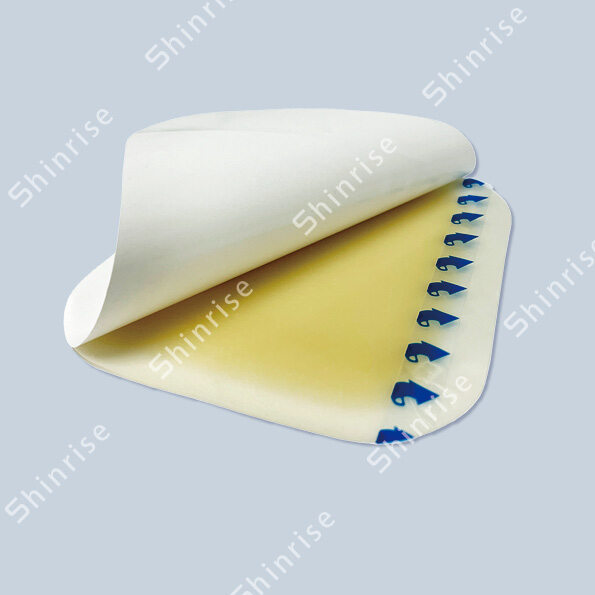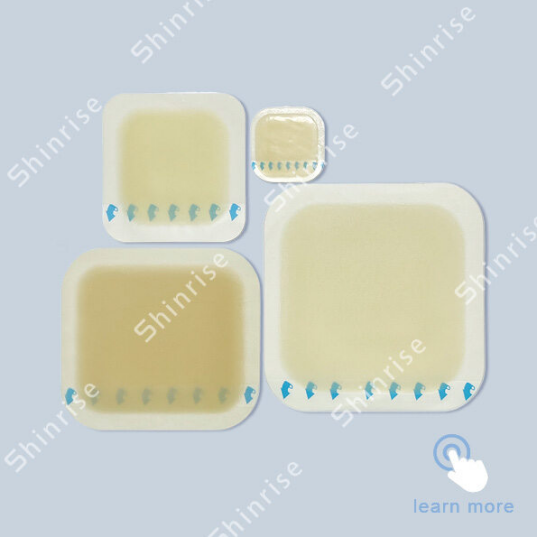Email cannot be empty
Password cannot be empty
Email format error
Email cannot be empty
Email already exists
6-20 characters(letters plus numbers only)
The password is inconsistent
Email format error
Email cannot be empty
Email does not exist
6-20 characters(letters plus numbers only)
The password is inconsistent


How Often Should Hydrocolloid Dressings be Changed?
Effective wound care is crucial for promoting healing and preventing complications. Hydrocolloid dressings have become a staple in wound management, but the question remains: How often should hydrocolloid dressings be changed? In this comprehensive blog, we delve into the latest information and guidelines surrounding the frequency of hydrocolloid dressing changes.
I. Understanding Hydrocolloid Dressings: A Brief Overview
1.1 The Role of Hydrocolloid Dressings in Wound Care
Hydrocolloid dressings are renowned for their ability to create a moist wound environment, promoting optimal conditions for healing. In this section, we explore the fundamental features of hydrocolloid dressings, highlighting their effectiveness in managing various wounds, including burns.
1.2 Unique Properties for Burns: Hydrocolloid Dressings for Burns
Hydrocolloid dressings offer a specialized solution for burns, providing a protective barrier while facilitating the healing process. We discuss the specific advantages of using hydrocolloid dressings in burn care, emphasizing their role in reducing pain, preventing infection, and supporting tissue regeneration.

II. Factors Influencing Hydrocolloid Dressing Change Frequency
2.1 Wound Type and Severity
The frequency of hydrocolloid dressing changes is intricately tied to the nature and severity of the wound. This section examines how different wounds demand varied change intervals, offering insights into tailoring dressing changes based on individual patient needs.
2.2 Monitoring Exudate Levels
Exudate management is a critical aspect of wound care. We delve into the significance of monitoring exudate levels and how it guides healthcare professionals in determining the optimal timing for hydrocolloid dressing changes. Striking the right balance is essential for preventing maceration or insufficient moisture.
III. Current Guidelines and Best Practices
3.1 Evidence-Based Recommendations
In this section, we explore the latest evidence-based recommendations on how often hydrocolloid dressings should be changed. Drawing from authoritative sources and recent studies, we provide healthcare practitioners with up-to-date guidance to optimize wound care outcomes.
3.2 Tailoring Dressing Changes to Individual Patients
Individualized patient care is paramount in wound management. Here, we discuss the importance of assessing patient-specific factors, such as overall health, lifestyle, and preferences, in determining the frequency of hydrocolloid dressing changes.
IV. Potential Challenges and Solutions
4.1 Addressing Adherence Issues
One challenge in hydrocolloid dressing usage is maintaining proper adherence. We analyze common adherence issues and provide practical solutions to enhance dressing longevity without compromising effectiveness.
4.2 Minimizing Disruption to Wound Healing
Frequent dressing changes can disrupt the wound healing process. This section explores strategies to minimize disruption, emphasizing the importance of balancing optimal healing conditions with the need for dressing changes.
V. Patient Education and Empowerment
5.1 Educating Patients on Self-Monitoring
Empowering patients to actively participate in their wound care is invaluable. We discuss the role of patient education in promoting self-monitoring, enabling individuals to recognize signs that may necessitate a change in hydrocolloid dressings.
5.2 Enhancing Compliance through Understanding
By enhancing patients' understanding of the reasons behind dressing changes, healthcare providers can improve compliance. We explore communication strategies to foster a collaborative approach to wound care.
VI. Conclusion: Striking the Right Balance
In conclusion, the frequency of hydrocolloid dressing changes is a nuanced decision influenced by various factors. Healthcare providers must balance evidence-based guidelines, individual patient needs, and the specific characteristics of the wound. By striking this balance, optimal wound care outcomes can be achieved.
VII. Shinrise: Your Trusted Partner in Wound Care Solutions
7.1 Elevate Wound Care with Shinrise
As a leading supplier of medical dressings, Shinrise is committed to providing high-quality hydrocolloid dressings for burns and other wound care needs. Explore our range of innovative solutions designed to optimize healing and enhance patient comfort. Trust Shinrise for excellence in wound care.
7.2 Contact Shinrise for Tailored Wound Care Solutions
For healthcare professionals seeking reliable wound care solutions, Shinrise invites you to explore our comprehensive product offerings. Contact us today to discuss your specific requirements and elevate your wound care practices with Shinrise – where quality meets care.

